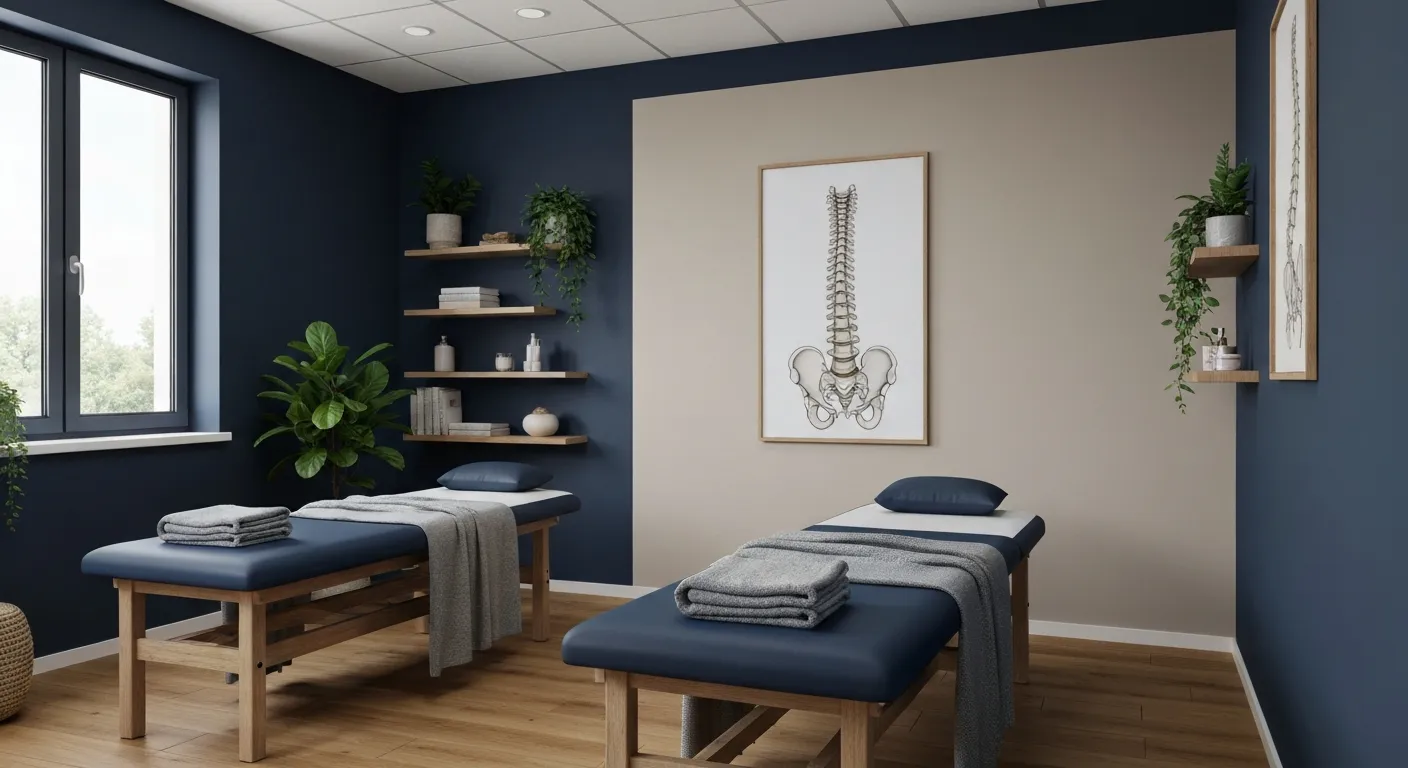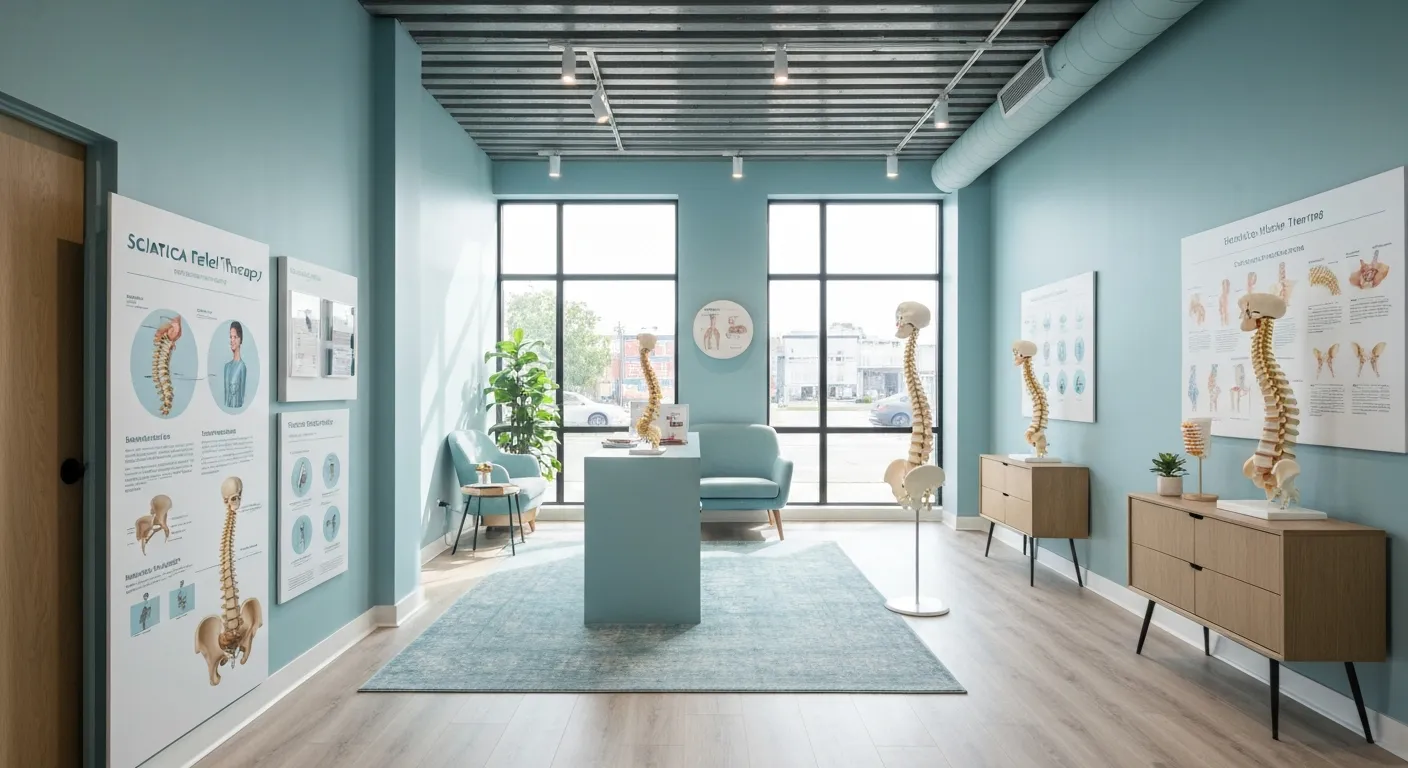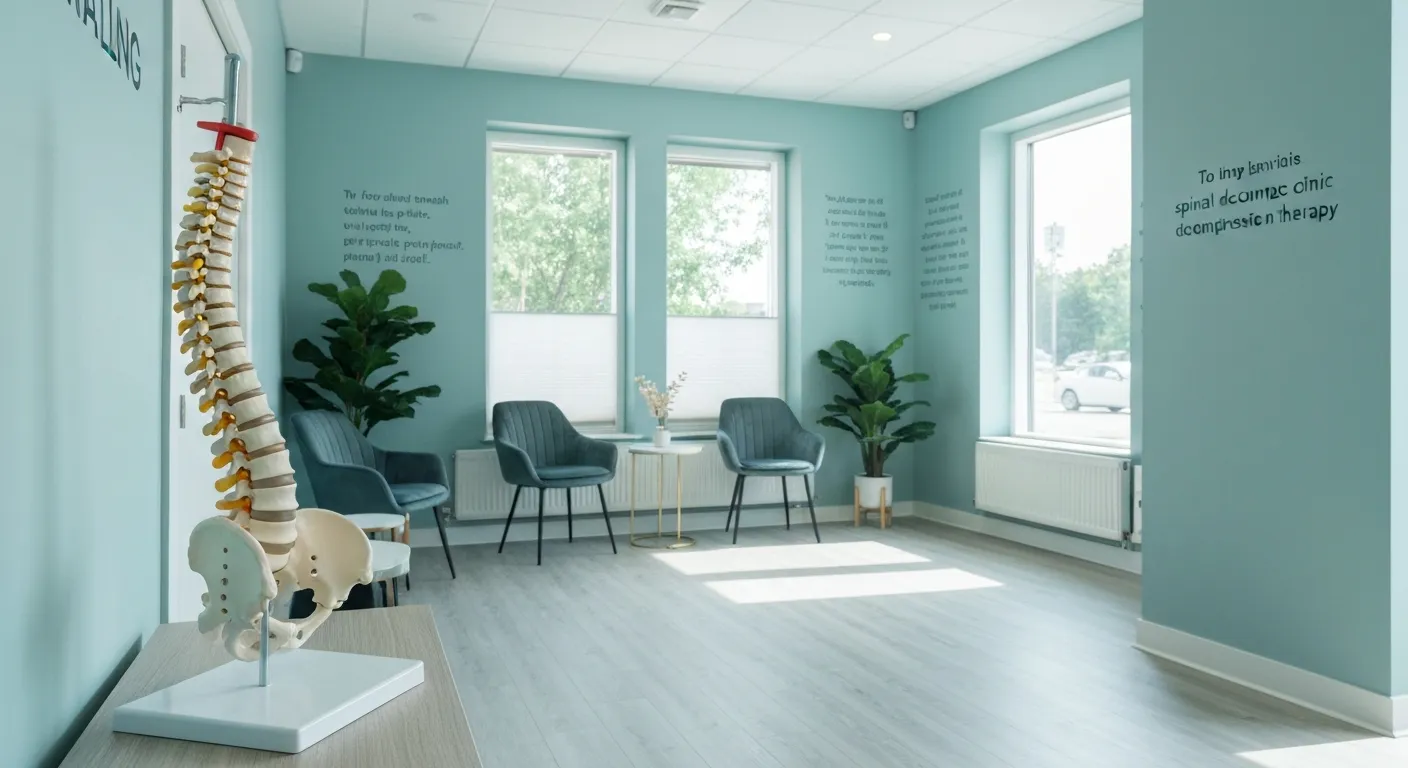Patient Experiences: How Chiropractic Care Transformed Their Lives
November 3, 2025
9 min

Discovering Relief and Renewal Through Chiropractic Treatment
Chiropractic care has become a beacon of hope for countless individuals suffering from a variety of musculoskeletal and neurological conditions. This article explores genuine patient experiences, shedding light on how chiropractic treatments have not only alleviated pain but also transformed lives. From managing chronic pain and improving mobility to enhancing overall well-being, these stories underscore the profound impact of chiropractic care beyond traditional medical approaches.
Understanding Chiropractic Adjustments and Their Therapeutic Benefits

What is a chiropractic adjustment and what conditions is it used to treat?
A chiropractic adjustment is a hands-on therapeutic treatment performed by licensed chiropractors. It involves applying controlled force to specific joints, especially in the spine, to realign vertebrae and enhance spinal motion. This technique aims to reduce pain and improve the body's natural movement and function.
Common conditions treated with chiropractic adjustments include lower back pain, neck pain, headaches (including migraines), joint pain, arthritis, sciatica, and various musculoskeletal issues. The adjustments may also help with posture problems and symptoms related to nerve pressure.
Benefits of chiropractic care
Chiropractic adjustments offer several benefits:
- Effective pain relief for conditions like back and neck pain (drug-free pain management, alternatives to medication for pain)
- Improved posture and spinal alignment (posture correction)
- Increased range of motion and joint mobility
- Alleviation of headaches and migraines by reducing muscle tension (migraine relief
- Support for minor injuries such as whiplash (minor injuries)
- Often rapid or immediate relief following treatment (immediate pain relief
Additionally, regular chiropractic care can promote long-term health by addressing underlying musculoskeletal imbalances (long-term benefits, patient satisfaction and outcomes).
Safety and risks associated with chiropractic treatment
When administered by trained and licensed professionals, chiropractic adjustments are generally safe (licensed chiropractic professionals). Patients may experience mild temporary soreness or fatigue post-treatment, typically resolving within a day (post-treatment soreness).
Serious risks are very rare but can include herniated discs, nerve compression, or—in extremely rare cases—stroke following neck adjustments (risks of chiropractic adjustments, stroke risk). These risks increase primarily when treatments are performed by unlicensed or improperly trained practitioners.
Overall, the safety profile of chiropractic care is favorable, especially compared to invasive treatments or long-term medication use. It provides a non-invasive option for managing pain and musculoskeletal health effectively.
Patient Satisfaction: The Pillars of Trust and Communication

How satisfied are patients with chiropractic care and why?
Patients consistently report Patient satisfaction with chiropractic care across various conditions. Satisfaction levels are often higher than those reported for other healthcare providers, including medical doctors. This elevated satisfaction is attributed to several factors: clinicians provide Empathetic clinician interactions, engage in Patient-centered chiropractic care, develop strong Therapeutic relationship in chiropractic, and offer Personalized Chiropractic Treatment Plans. Patients appreciate being listened to carefully, understanding their diagnosis fully, and having an active role in their treatment decisions. These elements foster Trust in chiropractic care, leading to positive outcomes.
What role does communication play in patient satisfaction?
Communication is fundamental to positive patient experiences in chiropractic care. Effective communication involves Effective communication in chiropractic treatment, courteous and kind behavior from practitioners, and responsiveness to patient questions. Patients note that Communication quality in chiropractic outcomes increasing their Patient satisfaction with chiropractic care. This supportive interaction style makes patients feel valued and respected, which contributes significantly to their overall satisfaction.
How does chiropractic patient satisfaction compare to other healthcare providers?
Research consistently shows that Chiropractic care vs other healthcare providers and other treatments like medication or sham interventions. This difference is largely due to the Patient-centered chiropractic care that chiropractors cultivate. Patients often report greater trust and confidence in their chiropractor and perceive the care environment as more supportive and attentive.
Why is patient-centered care important in chiropractic satisfaction?
Patient-centered chiropractic care is crucial because it aligns treatment with individual patient needs and preferences. Chiropractors who involve patients in Personalized Chiropractic Treatment Plans tend to foster better engagement and adherence. This collaborative approach helps patients feel empowered, respected, and more satisfied with their care experience, ultimately enhancing treatment effectiveness and perceived value.
Transformative Patient Stories: From Pain to Empowerment
How has chiropractic care transformed patients' lives through their own accounts?
Patients share powerful stories of recovery and improved quality of life thanks to chiropractic care. For instance, one individual who suffered from persistent hip joint pain relief found significant relief after treatment, enabling better mobility and daily comfort. Another patient reported that chiropractic treatment by Dr. Muir alleviated severe migraines and shoulder pain, also experiencing increased energy and overall wellbeing.
Pregnant patients have found pregnancy chiropractic care beneficial in reducing discomfort related to pregnancy, leading to a more comfortable experience. Others recovering from trauma, such as falls causing long-term pain, have seen substantial improvements after weeks of consistent patient success stories.
Functional improvements are evident in stories where athletes and active individuals returned to their physical activities without pain, such as cheerleading, tumbling, and even walking normally after injuries (patient success stories). Patients emphasize not only immediate relief but also the importance of sustained care. This includes continued chiropractic adjustments, personalized exercises, and nutritional guidance as part of long-term health management.
These testimonies highlight the holistic chiropractic care, patient-centered chiropractic care, combining effective pain relief with education and empowerment to maintain wellness and prevent future issues. The narrative shared by patients points to a transformation from discomfort and limited function to renewed health, activity, and confidence.
Chiropractic Care for Complex and Chronic Conditions

Can chiropractic care help with chronic conditions and neurological issues?
Yes, chiropractic care has demonstrated promising results in managing chronic pain and neurological issues. Patients with chronic conditions such as arthritis and longstanding trauma-related pain have reported substantial relief after consistent patient success stories. For instance, a patient with knee arthritis experienced over 90% symptom improvement, avoiding surgery through chiropractic care. Similarly, patients recovering from traumatic injuries such as falls have seen significant pain reduction and improved mobility after weeks of treatment (Patient Success Stories, Neurologic Chiropractic Care Success).
Treatment of chronic pain and trauma recovery
Chiropractors use manual adjustments and soft tissue therapies to realign joints, reduce inflammation, and restore function. These chiropractic care for pain relief techniques can alleviate persistent pain from musculoskeletal disorders and aid recovery from physical trauma. Patient testimonials reveal improvements in joint function, mobility, and daily activity performance following chiropractic care, even in complicated cases with long histories of injury (Patient Testimonials, Chiropractic adjustment benefits.
Neurologic and pediatric patient improvements
Chiropractic care extends benefits to neurological and pediatric patients as well. Intensive treatment for neurological conditions like cerebral palsy and brain injury has led to enhanced gait, balance, and motivation. Pediatric cases show progress in speech, behavior, and overall health after sustained care, highlighting the potential of chiropractic interventions beyond musculoskeletal pain management (Success Stories, Neurologic Chiropractic Care, chiropractic care patient experiences).
Ongoing maintenance and holistic approaches
Many patients emphasize the role of ongoing care, including regular adjustments, targeted exercises, and nutritional guidance, to maintain health improvements. Holistic chiropractic care approaches that involve education on posture, lifestyle modifications, and supplement use contribute to long-term wellness. This comprehensive strategy supports not only symptom relief but also overall functional enhancement and quality of life (Chiropractic treatment procedures and lifestyle advice, Patient education in chiropractic care).
Holistic and Personalized Care: The Chiropractic Philosophy

How do chiropractors tailor treatments to individual patients?
Chiropractors take a comprehensive, patient-centered chiropractic care approach to care by starting with a detailed assessment. This includes gathering the patient’s medical history, conducting physical exams, and utilizing diagnostic tools such as Dr. Muir's x-rays and health goals to better understand the individual’s condition.
Based on this thorough evaluation, chiropractors collaborate with patients to set specific health goals. They then develop personalized chiropractic treatment plans tailored to each patient’s needs. These plans typically combine manual spinal adjustments with targeted exercises and ergonomic advice to improve posture and function.
Education plays a central role, as patients learn about their body mechanics and proper care to maintain improvements over time. Additionally, chiropractors often incorporate adjunctive therapies such as massage, low-level laser therapy, and nutritional counseling to enhance healing and pain relief, reflecting a holistic chiropractic care approach.
This holistic strategy ensures treatments are not only focused on immediate pain relief but also promote long-term wellness by addressing the underlying causes and supporting patients in making lifestyle changes, contributing to high satisfaction levels in chiropractic patients.
Safety, Training, and Evidence-Based Practice in Chiropractic Care
What training do chiropractors have and how safe is chiropractic care?
Chiropractors undergo rigorous training, completing a minimum four-year doctoral graduate program that includes over 4,200 hours of classroom, laboratory, and clinical internship. They must also pass four national board exams to become licensed primary-contact providers. This comprehensive education ensures that chiropractors are well-prepared to diagnose and treat musculoskeletal conditions safely (Chiropractors in the U.S., Chiropractic healthcare profession, Chiropractic Education and Training.
Evidence supporting chiropractic treatments
There is strong research support for the effectiveness of spinal manipulation in treating acute, subacute, and chronic low back pain, neck pain, and headaches, including migraines and cervicogenic headaches. Systematic reviews and major clinical guidelines endorse chiropractic care as a first-line, non-drug option for managing spinal and musculoskeletal disorders (Chiropractic adjustment therapeutic treatment. Additional therapies like soft tissue manipulation, exercise, and ergonomic education are also evidence-based and commonly used (Chiropractic treatment for spinal conditions, Chiropractic care for musculoskeletal health).
Risk management and patient screening
Chiropractic treatments are generally safe when performed by licensed professionals. Minor, temporary side effects such as mild soreness may occur but serious complications are extremely rare. Risks like herniated discs, nerve compression, or stroke are uncommon and mostly associated with unlicensed or poorly trained practitioners (Safety of chiropractic adjustments, Risks of chiropractic adjustments. Patient screening protocols and adherence to evidence-based guidelines contribute significantly to minimizing these risks and ensuring patient safety (Evidence-Based Practice in Chiropractic, Chiropractic care for pain relief).
Beyond Pain Relief: Enhancing Overall Wellness Through Chiropractic Care

What broader benefits does chiropractic care offer beyond pain relief?
Chiropractic care extends well beyond simply relieving pain. By focusing on spinal alignment and nervous system health, chiropractic treatments contribute to a range of holistic chiropractic care. Many patients report enhanced mental health, including reductions in anxiety and depression symptoms, likely due to decreased pain and increased nervous system function.
Better sleep quality is another notable benefit, as chiropractic adjustments can alleviate discomfort that often disrupts rest. Improved sleep then supports overall well-being, mood, and recovery (Improving sleep with chiropractic).
Chiropractic care also helps boost immune function by optimizing the nervous system, which plays a vital role in regulating immune responses (Boosting immune response through chiropractic. This effect aligns with reports of patient success stories of patients experiencing fewer illnesses and better general health after ongoing chiropractic treatment.
Crucially, chiropractic care provides a drug-free pain management and non-invasive musculoskeletal treatment alternative to pain relief and health maintenance. This approach reduces reliance on medications and invasive procedures, making it a safer option for many individuals seeking long-term wellness. It also encourages patients to adopt healthier lifestyle choices, such as postural and exercise education, reinforcing the overall benefits of this holistic treatment approach.
Embracing Chiropractic Care for Lasting Health Transformations
The personal accounts and research-backed benefits affirm that chiropractic care offers much more than symptomatic pain relief. Through skilled adjustments, personalized treatment, and holistic support, chiropractic care helps patients regain mobility, alleviate chronic conditions, and enhance their overall quality of life. With highly trained practitioners committed to patient-centered care and safety, chiropractic treatments present a valuable, non-invasive pathway to wellness that transforms lives in profound ways.
Recent articles

Inspiring Patient Testimonials Highlighting Chiropractic Success

Chiropractic Care: A Natural Solution for Back Pain Relief

Amazing Patient Success Stories in Chiropractic Wellness

Combining Physiotherapy and Chiropractic for Optimal Healing

Spinal Decompression Therapy: A Breakthrough for Sciatica Sufferers

5 Holistic Treatments That Complement Chiropractic Care

How Physiotherapy Supports and Enhances Chiropractic Treatment

Root Cause Versus Symptom Treatment: Making the Right Choice

7 Essential Things to Know Before Choosing Your Chiropractor

Why Addressing Root Causes of Pain Matters More Than Just Symptoms

Nutritional Counseling Strategies to Boost Your Overall Wellness

How Spinal Decompression Therapy Alleviates Sciatic Nerve Pain

Long-Term Pain Relief Through Targeted Corrective Exercises

10 Benefits of Integrating Physiotherapy with Chiropractic Treatments

Corrective Exercises That Help Prevent Recurring Pain

8 Corrective Exercises Proven for Lasting Pain Relief

Lifestyle Habits for Maintaining a Healthy Spine

What You Will Experience at Your Initial Chiropractic Visit

What Happens at Your First Visit to a Chiropractor?

Focusing on Root Cause Analysis for Effective Pain Relief

Tips for Lifestyle Changes to Support Spinal Health

Tips for Lifestyle Changes to Support Spinal Health

Holistic Treatment Plans: Alternatives to Surgery for Chronic Pain

Enhance Wellness Through Personalized Nutritional Counseling

Non-Invasive Pain Relief: Exploring Holistic Treatment Alternatives

Sciatica Relief Through Targeted Spinal Decompression

Integrating Physiotherapy with Chiropractic Treatments for Better Results

Testimonials That Demonstrate the Benefits of Chiropractic Care

The Power of Corrective Exercises in Pain Management

A Step-by-Step Guide to Your Initial Chiropractic Consultation

9 Nutritional Tips to Enhance Your Chiropractic Wellness Journey

Patient Experiences: How Chiropractic Care Changed Their Lives

Lifestyle Recommendations to Keep Your Spine in Top Shape

Effective Corrective Exercises for Long-Term Pain Relief

Back Pain Benefits: What Chiropractic Care Can Do for You

Spinal Decompression Techniques for Effective Sciatica Relief

Top Nutritional Counseling Tips for Enhanced Wellness

6 Lifestyle Habits That Boost Spine Health Daily

Discover Holistic and Non-Surgical Pain Relief Solutions

Exploring Holistic and Non-Surgical Treatment Options for Pain

The Role of Physiotherapy in Enhancing Chiropractic Care Outcomes

Complementing Chiropractic Care with Physiotherapy: What You Need to Know

What to Expect During Your First Chiropractic Visit

Simple Lifestyle Adjustments to Maintain a Healthy Spine

Personalized Nutritional Counseling for Improved Health Outcomes

Exploring Non-Surgical Treatments for Spine-Related Conditions

An Introduction to Spinal Decompression for Sciatica Patients

Transformative Success Stories: Patient Experiences with Chiropractic Treatments

Why Chiropractic Care Is Essential for Back Pain Relief

Addressing Underlying Causes Versus Symptom Management in Pain Care

The Role of Nutrition in Enhancing Chiropractic Treatment Effectiveness

Sciatica Treatment Options: Is Spinal Decompression Right for You?

Lifestyle Tips to Maintain a Healthy Spine and Prevent Back Issues

The Synergy Between Physiotherapy and Chiropractic Treatments

What Happens During Your Initial Chiropractic Consultation

Effective Corrective Exercises for Sustainable Pain Management

Taking a Root Cause Approach to Chronic Pain Management

Holistic Pain Management Techniques Without Surgery

How Patient Success Stories Validate Chiropractic Care Benefits

Spinal Decompression: Innovative Treatment for Sciatic Nerve Pain

Spinal Decompression Therapy: A Non-Invasive Approach to Sciatica Relief

Exploring Holistic Approaches Beyond Surgery for Pain Relief

Practical Lifestyle Advice to Support a Healthy Spine Every Day

Corrective Exercise Routines Designed for Long-Term Pain Prevention

Real Patient Stories: Overcoming Chronic Pain with Chiropractic Care

Lifestyle Changes That Promote a Healthy Spine and Prevent Injury

How Addressing the Root Cause of Pain Leads to Lasting Relief

Non-Surgical Holistic Therapies to Manage Chronic Pain Effectively

Nutritional Counseling's Impact on Physical Health and Healing

Benefits of Regular Chiropractic Care for a Stronger Back

Your First Chiropractic Visit: What to Expect and How to Prepare

Patient Experiences: How Chiropractic Care Transformed Their Lives

Exploring Holistic, Non-Surgical Options for Pain Management

Combining Physiotherapy with Chiropractic Treatments for Enhanced Recovery

Holistic Treatments That Offer Alternatives to Surgery for Pain Relief

Corrective Exercise Strategies for Long-Term Spine Health

How Physiotherapy Complements Chiropractic Adjustments for Better Outcomes

First-Time Chiropractic Visitors: What You Should Know

Understanding the Importance of Treating Pain at Its Source

Adopting Lifestyle Changes to Support Your Spine's Wellness

Utilizing Physiotherapy to Enhance Chiropractic Treatment Outcomes

The Key Advantages of Chiropractic Care for Back Pain Sufferers

Why Focusing on Root Causes Improves Pain Treatment Success

Corrective Exercises That Promote Lasting Pain Relief and Mobility

Sciatica Relief Through Targeted Spinal Decompression Techniques

Preparing for Your First Chiropractic Appointment with Confidence

Healthy Lifestyle Habits for Maintaining Spinal Alignment

Success Stories Highlighting Chiropractic's Role in Pain Recovery

Top Benefits of Chiropractic Care for Chronic Back Pain

Nutrition Tips to Boost Your Overall Wellness and Recovery

How Chiropractic Care Alleviates Back Pain Naturally

How Nutritional Counseling Supports Overall Wellness and Spine Health

Step-by-Step Guide to Your First Visit with a Chiropractor

Using Nutrition to Support Chiropractic and Overall Wellness

Integrating Physiotherapy in Your Chiropractic Healing Journey

Integrating Physiotherapy in Your Chiropractic Healing Journey

How Physiotherapy Complements Chiropractic Adjustments for Faster Healing

Lifestyle Tips for Maintaining a Healthy Spine and Preventing Back Pain

Heartwarming Patient Testimonials Highlighting Chiropractic Success

